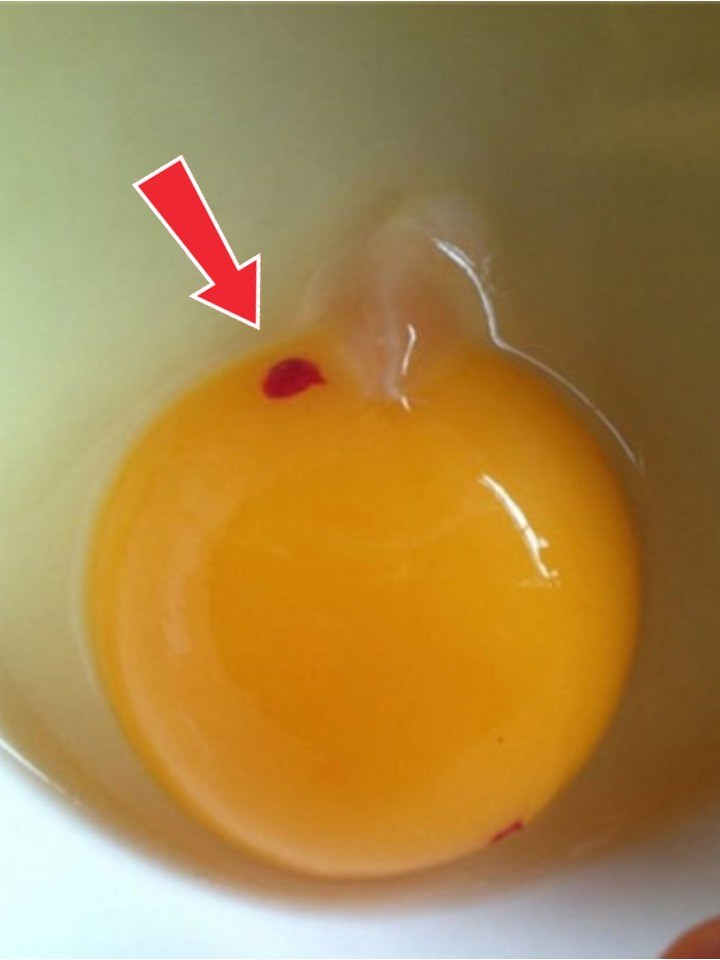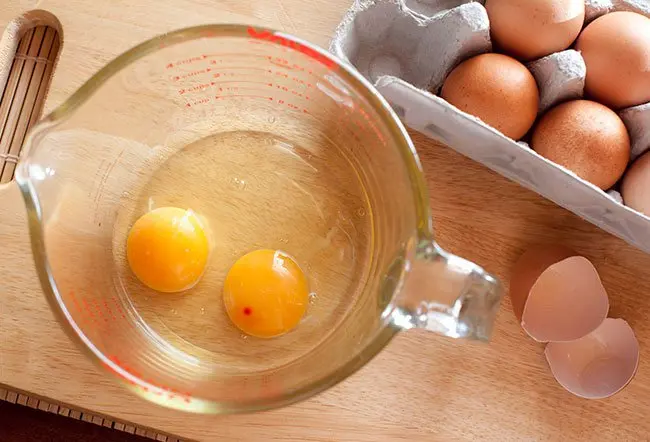Should You Eat Eggs With Blood Spots? The Truth Most People Never Hear
Cracking open an egg and spotting a tiny red speck can make anyone pause. For many people, the instinct is simple: “Nope, toss it out.” But what if that egg you’re about to throw away is completely safe—and totally normal? The truth behind blood spots surprises most people, and understanding it can save you money, reduce waste, and calm some kitchen worries. Let’s break it down in a simple, human way that clears up all the myths.
Understanding Blood Spots and What They Really Mean
When you see a small red or dark spot inside an egg, it’s easy to imagine the worst. But these spots have nothing to do with contamination or unsafe handling. They form naturally when a tiny blood vessel ruptures during the egg-laying process. Think of it like a tiny bruise—harmless, common, and far from dangerous. This happens more often in darker-shelled eggs because the spots are easier to see.

It’s surprising, but true: that tiny dot says more about nature’s imperfections than any real health risk.
Why Blood Spots Don’t Mean the Egg Is Fertilized
One of the biggest misconceptions is that a red spot means the egg is fertilized. That’s not the case at all. Blood spots don’t indicate development or growth. Eggs from grocery stores have never been incubated, and the conditions in which they’re stored make growth impossible. So you can relax—nothing inside that egg is “forming” or “developing.”
The spot is simply a cosmetic issue.
Are Eggs With Blood Spots Safe To Eat?
Yes. Eggs with blood spots are completely safe to eat when cooked properly. Many chefs use them without hesitation. If the spot bothers you visually, you can remove it with the tip of a knife, and the rest of the egg is perfectly fine to use in any recipe.
Here’s the real truth: the presence of a red spot doesn’t mean danger. It simply means nature doesn’t always create flawless products.
Video : What Happens to Your Body If You Eat 2 Eggs Every Day | Eggs Benefits | Newfittop
Other Spots and Specks You Might See
Blood spots aren’t the only tiny surprises you’ll find in eggs, and knowing the difference can help you avoid confusion.
Meat spots: These small brown or dark specks come from harmless tissue inside the hen. They’re safe and can be removed easily.
Cloudy whites: This means the egg is fresh. Nothing to worry about.
Pink, red, or green egg whites: This is the only type of discoloration that signals danger. These colors can indicate bacterial growth, and eggs like this should be thrown away immediately.
Most imperfections are harmless, but this one is worth paying attention to.
Why Blood Spots Are More Common Than You Think
Blood spots occur in about 1% of all eggs, but the number used to be much higher. Today’s egg producers use a process called candling, where each egg is examined under bright light. Eggs with visible spots are often removed before reaching the shelves. However, candling isn’t perfect—especially with darker shells—so a few spotted eggs still slip through.
Instead of viewing the spot as a flaw, think of it as proof that your food came from nature, not a flawless machine.

How To Check If an Egg Is Truly Fresh
If you want extra reassurance about an egg’s quality, here are two quick tests anyone can do at home.
The water test: Place the egg in a bowl of water.
• If it sinks and lays flat, it’s fresh.
• If it stands upright, it’s still safe but older.
• If it floats, throw it away.
The smell test: Bad eggs smell bad. If you notice anything sour, sulfur-like, or unusual, don’t risk it.
Freshness has nothing to do with blood spots. It’s all about smell, texture, and how the egg behaves in water.
Cooking Eggs With Blood Spots
As long as the egg passes the smell and appearance test, you can cook it just like any other egg. Heat destroys any potential bacteria, and the red speck itself poses no health concerns. Use it for omelets, scrambled eggs, baking, frying, or boiling—anything you’d normally cook.
If you’ve been discarding spotted eggs, you may have been wasting perfectly good food for no reason.
Why Understanding Food Myths Matters
Misinformation spreads fast, especially when it comes to food safety. Knowing the truth helps you make confident decisions, reduce waste, and avoid unnecessary fear. A spotted egg isn’t unsafe or contaminated—it’s just part of nature’s imperfect beauty.
Video : Why you shouldn’t eat raw eggs
When you understand these tiny imperfections, you stop fearing them and start appreciating how natural your food truly is.
Conclusion
Blood spots in eggs might look alarming, but they’re harmless, common, and completely safe to eat when cooked properly. They don’t indicate anything dangerous and aren’t linked to fertilization or poor handling. By learning the real science behind these tiny dots, you can stop throwing away good eggs, save money, and cook with confidence. Next time you crack open an egg and spot a red dot, remember—it’s nothing more than a natural, harmless imperfection.